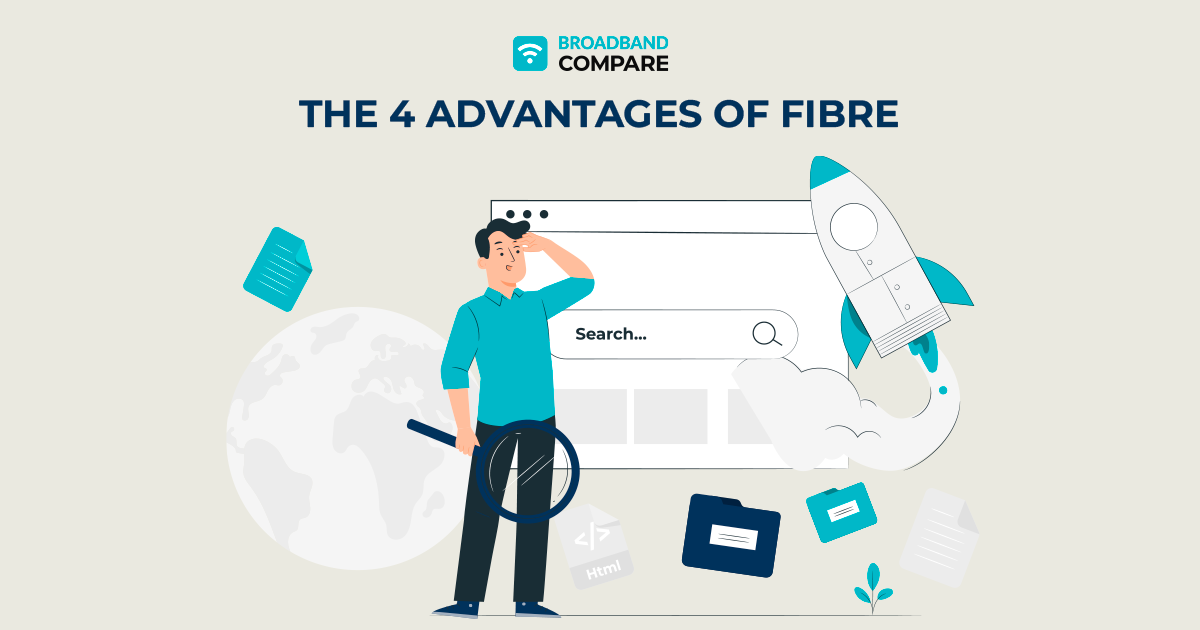
Fibre is an incredible advancement in the technology of broadband. It is the successor to the copper broadband network, which was the first technology to bring broadband internet to homes in New Zealand and the wider world.
Fibre is the next step up from copper. It is made up of fibre optic cables – hundreds of tiny strands of glass – which use the power of light to send data to and from your device at home. Previously, copper used electricity to transmit data. Because the speed of light is faster than the speed of electricity, fibre delivers ultra-fast internet speeds. There are a plethora of benefits to the fibre. Let’s dive into why more and more Kiwis are enjoying fibre in their homes.
Because fibre optic cables transmit data at the speed of light, Kiwis can enjoy ultra-fast download and upload speeds. There are several different types of fibre speeds and each one suits different households.
Fibre 50 (aka starter fibre): This is a great option for those who are just needing the internet to browse the web, send and receive emails, do online banking and basic video streaming. It suits households of 1-2 users.
Fibre 300: A lot faster than fibre 50, this is a great option for larger households who have multiple devices being used at the same time, or users who stream videos, play games and browse the internet.
Fibre 900: This ultra fast option is great for large households who all need to be connected at the same time, without experiencing buffering. It’s a good option for a household with many working or studying from home, and great for multiple gamers. It also supports 4K Ultra HD video streaming and gaming.
Hyperfibre: The next generation of fibre comes with lightning fast speeds is ideal for those who wish to stream lots of 4K videos and games, download huge files, and those with lots of users connecting at the same time. Great for a household of people working or studying from home and streaming simultaneously.
Broadband cables are like a pipe. The larger that pipe, the more data can transmit back and forth at the same time. Fibre cables are simply capable of transmitting more data at the same time, due to their higher bandwidth than predecessors, meaning that you can have multiple devices in use at the same time. This means that one person can be video calling, another can be gaming, and another can be streaming their favourite show without experiencing any buffering or lagging due to multiple connected devices.
Fibre cables are durable technology. They can withstand changes in temperature and storms, unlike copper wiring. This means that even during wild weather, you can usually stay connected.
It is important that your security and privacy are protected when transmitting data. Fibre optic cables are difficult for hackers to access since they use light technology and not electricity. This means that your data is not at risk of being breached during its quick journey through the fibre optic cables.
Most of New Zealand now has access to fibre. But if you don’t yet, it can take some time to install. However, the good news is that fibre have been rolling out across New Zealand for several years now, and more and more Kiwis have access to this incredible fast broadband option.
If you already have fibre connected, then check that you are on the right plan for your needs. Broadband Compare can help you find the plan that suits your unique internet needs and budget.
If you don’t have fibre connected, the first thing you need to check is if you can get it installed and if there is a cost involved. The good news is that fibre has been rolling out across the country.
Fibre are the way of the future, both in New Zealand and on the global stage. With the technology continuing to develop, now hyperfibre, the next level of fibre, has been around for a while in New Zealand suburbs. Fibre delivers the speeds, capabilities and reliability that is required and demanded of in this modern digital age, where we must have access to quick and secure connection at all times. Fibre has made all the difference for those who work from home, study from home, and stream from home. With such exhilarating speeds already at our fingertips, who knows what the future may hold?
Further Reading: